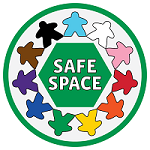let’s imagine you’re playing with your friends and you all have some stickers. Now, you want to trade your stickers with your friends, but you want to make sure no one cheats or forgets about the trades. So, you decide to write down every trade on a piece of paper. This way, everyone can see who traded what with whom.
Now, imagine this piece of paper is a block. Every time you and your friends make a trade, you add that information to the block. Once the block is full, you attach it to the previous block of trades, forming a chain. This is why it’s called a blockchain.
Just like in your game, a blockchain is a system where transactions (like buying and selling things) are recorded. Each transaction is a block, and they’re all linked together to form a chain. This makes it really hard for anyone to cheat or change the information, because everyone can see the entire history of trades.
So, in simple terms, a blockchain is like a big, transparent, and secure sticker trading list!
What is mining in blockchain?
let’s imagine you’re playing a game of treasure hunt. In this game, you have to solve a difficult puzzle, and the first one to solve it gets a treasure chest full of gold coins. This is similar to what mining is in blockchain.
In the world of blockchain, the “puzzle” is a complex mathematical problem that computers all over the world are trying to solve. When a computer solves this problem, it creates a new block in the chain (hence, “blockchain”) and records transactions or trades (like our sticker trades from before).
The first computer to solve the problem gets a reward, just like the treasure chest in our game. This reward is usually in the form of cryptocurrency, like Bitcoin. This whole process is known as mining.
So, in simple terms, mining in blockchain is like being the first to find the treasure in a treasure hunt game, but the treasure is digital and the game is played by computers!
What is proof of stake in blockchain?
let’s go back to our sticker trading game. Now, imagine that instead of everyone trying to solve a puzzle to get the treasure chest (like in mining), the game changes. In this new game, the person who gets to add the next block of trades to the chain is chosen based on how many stickers they already have. The more stickers you have, the more chances you have to be chosen. This is similar to what Proof of Stake (PoS) is in blockchain.
In the world of blockchain, the “stickers” are actually digital coins or tokens. In a Proof of Stake system, the person who gets to create the new block and validate transactions is chosen based on how many coins they hold and are willing to ‘stake’ or temporarily lock up as a kind of deposit. If they try to cheat and validate false transactions, they lose their stake.
So, in simple terms, Proof of Stake in blockchain is like a new rule in our sticker trading game where the person with the most stickers gets to decide the next trade, but they have to be honest or they’ll lose their stickers!
